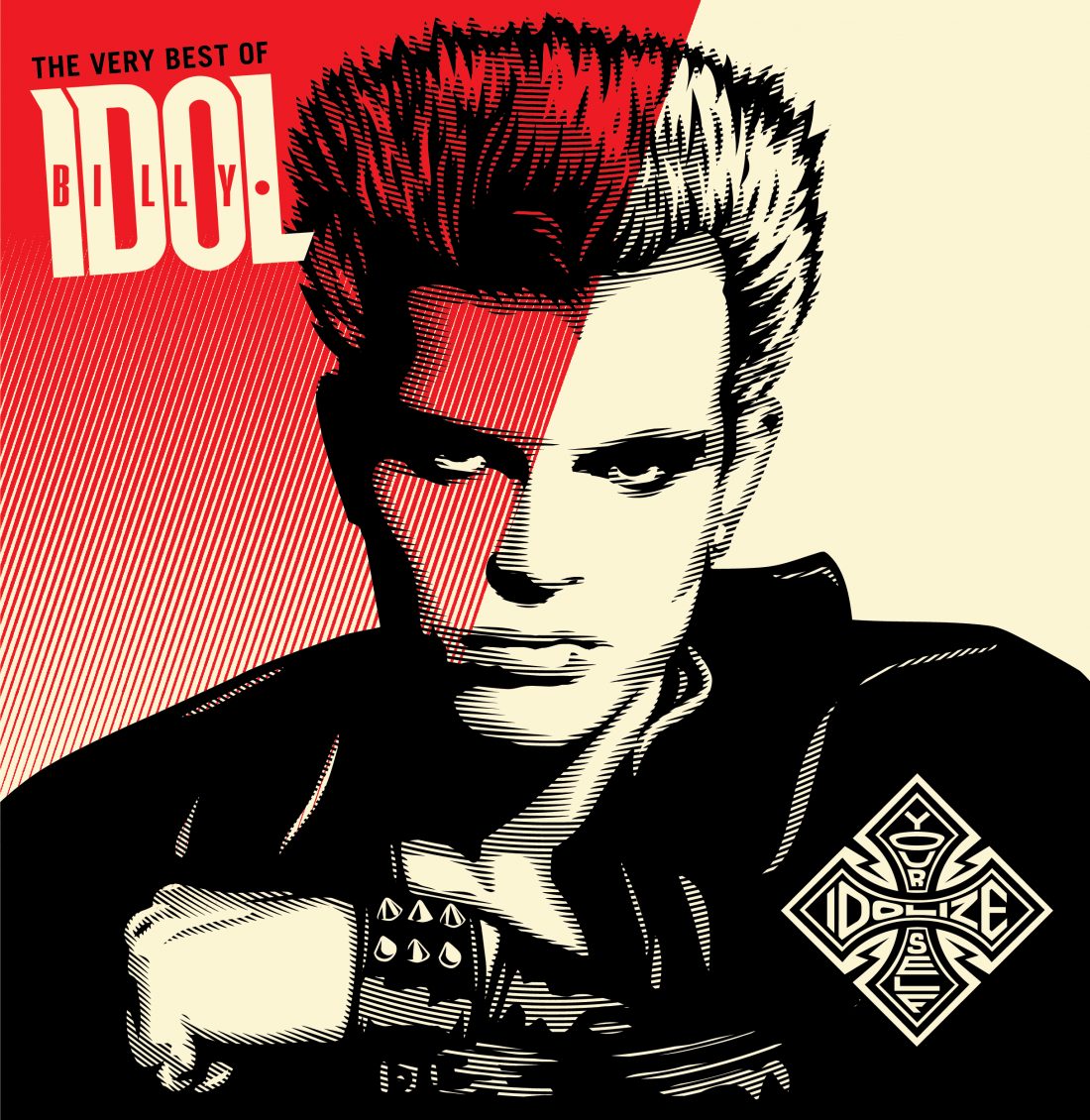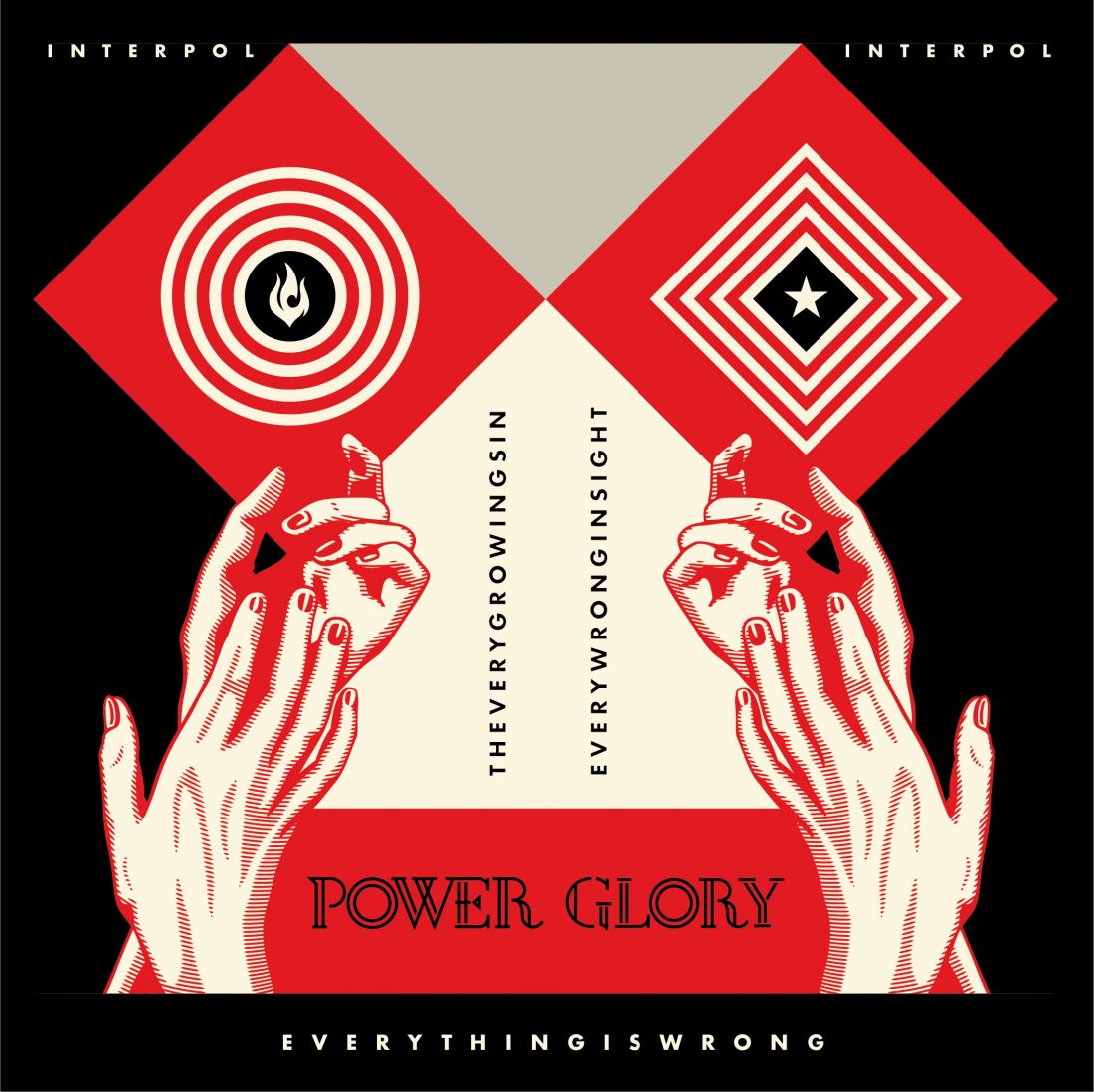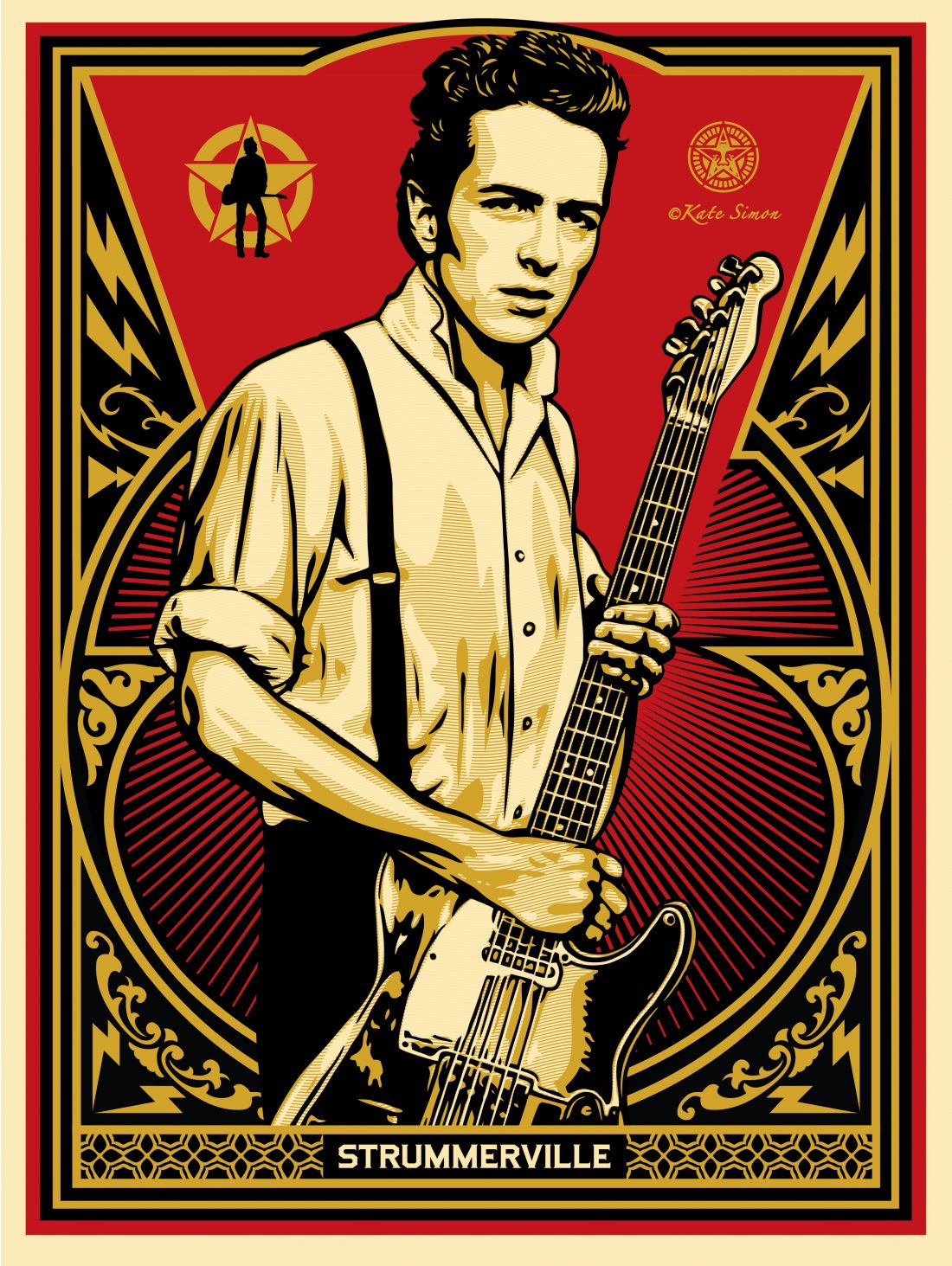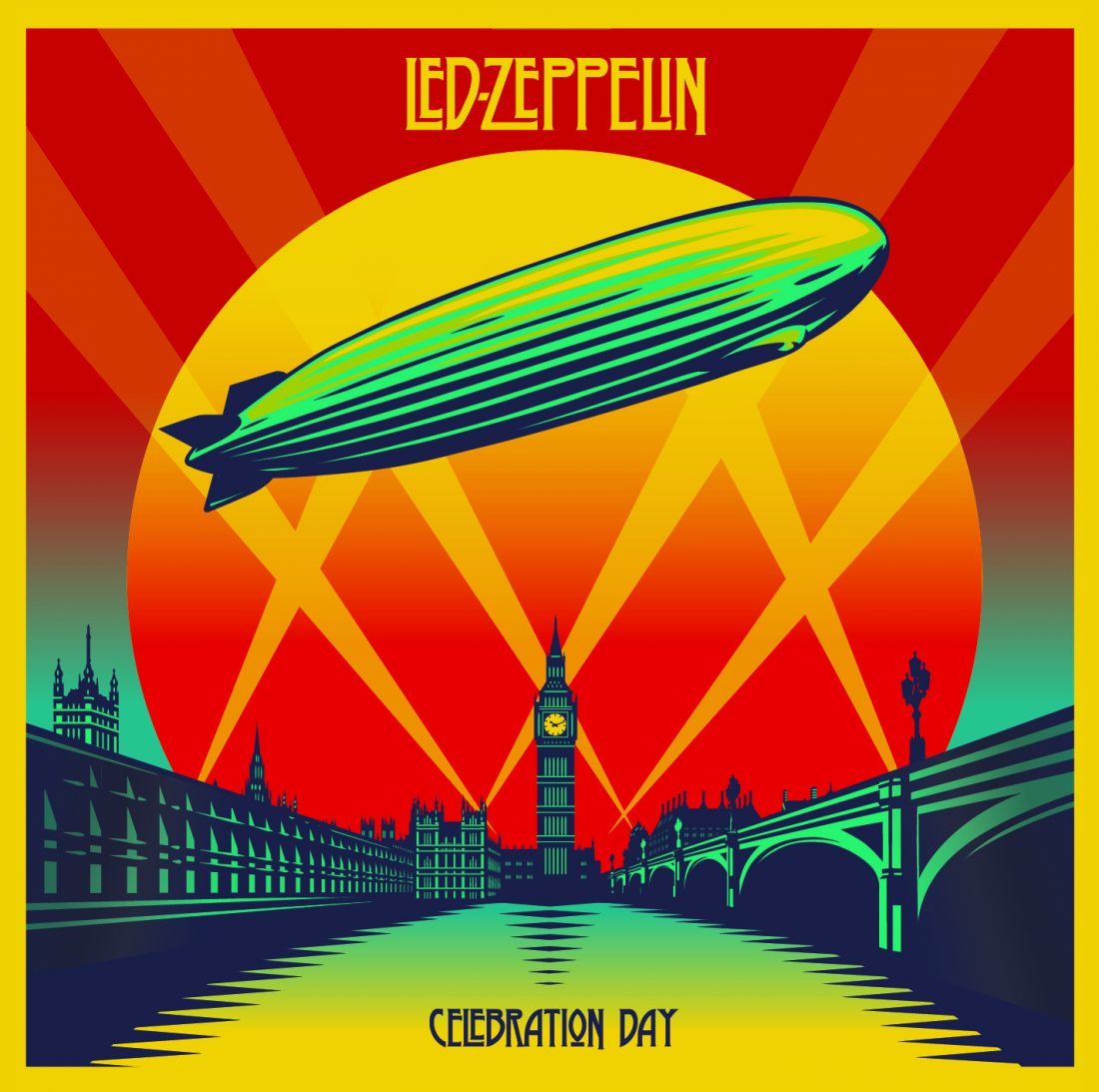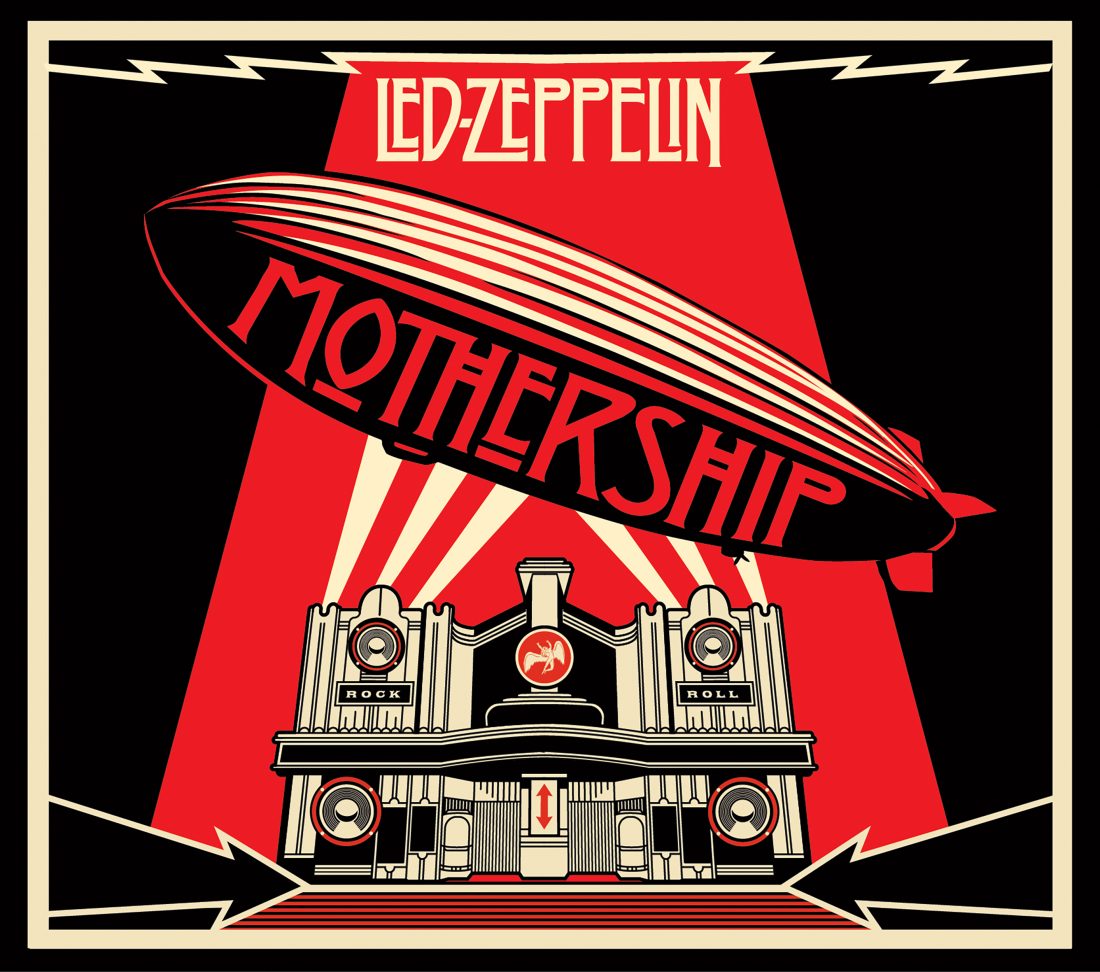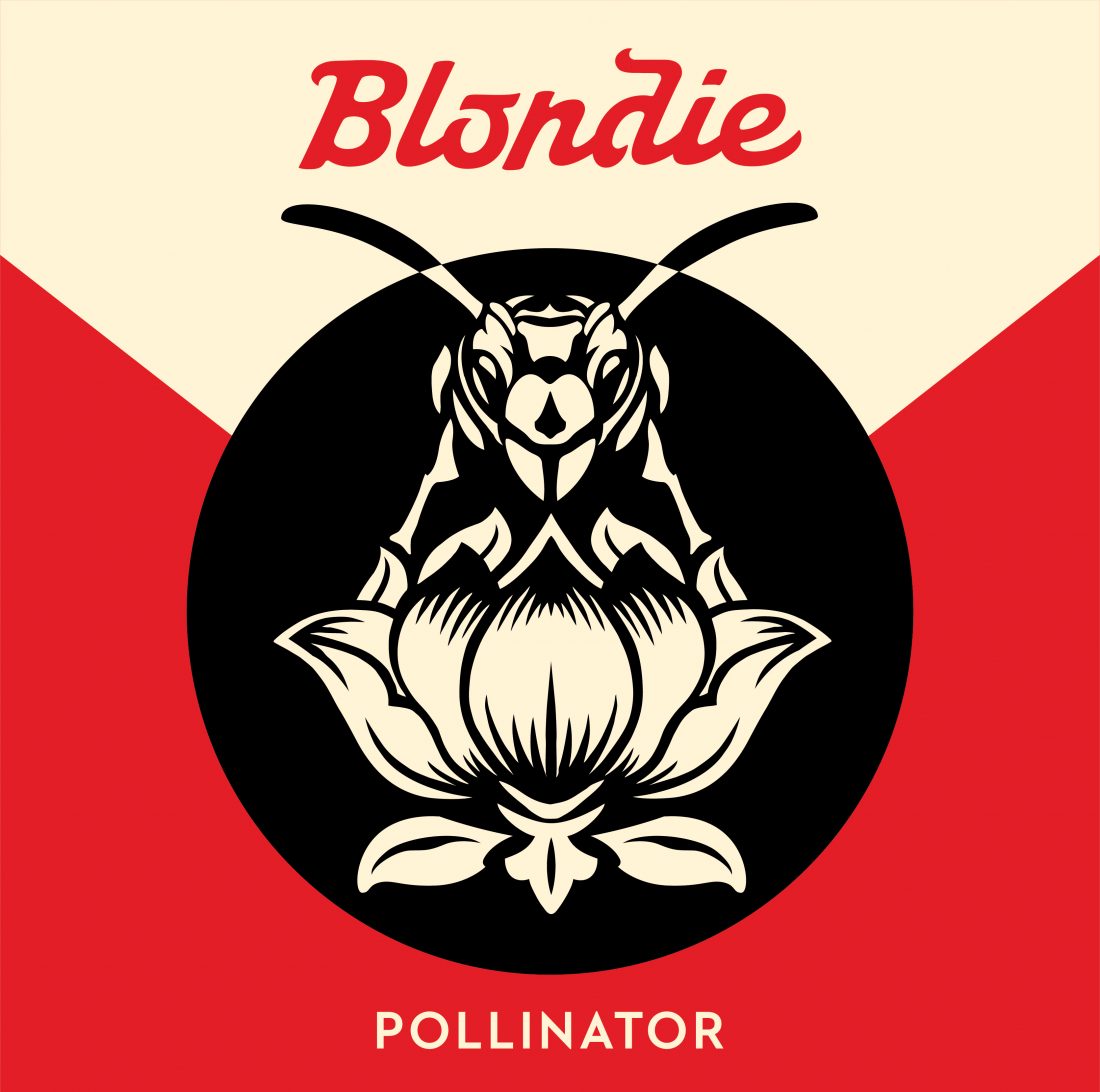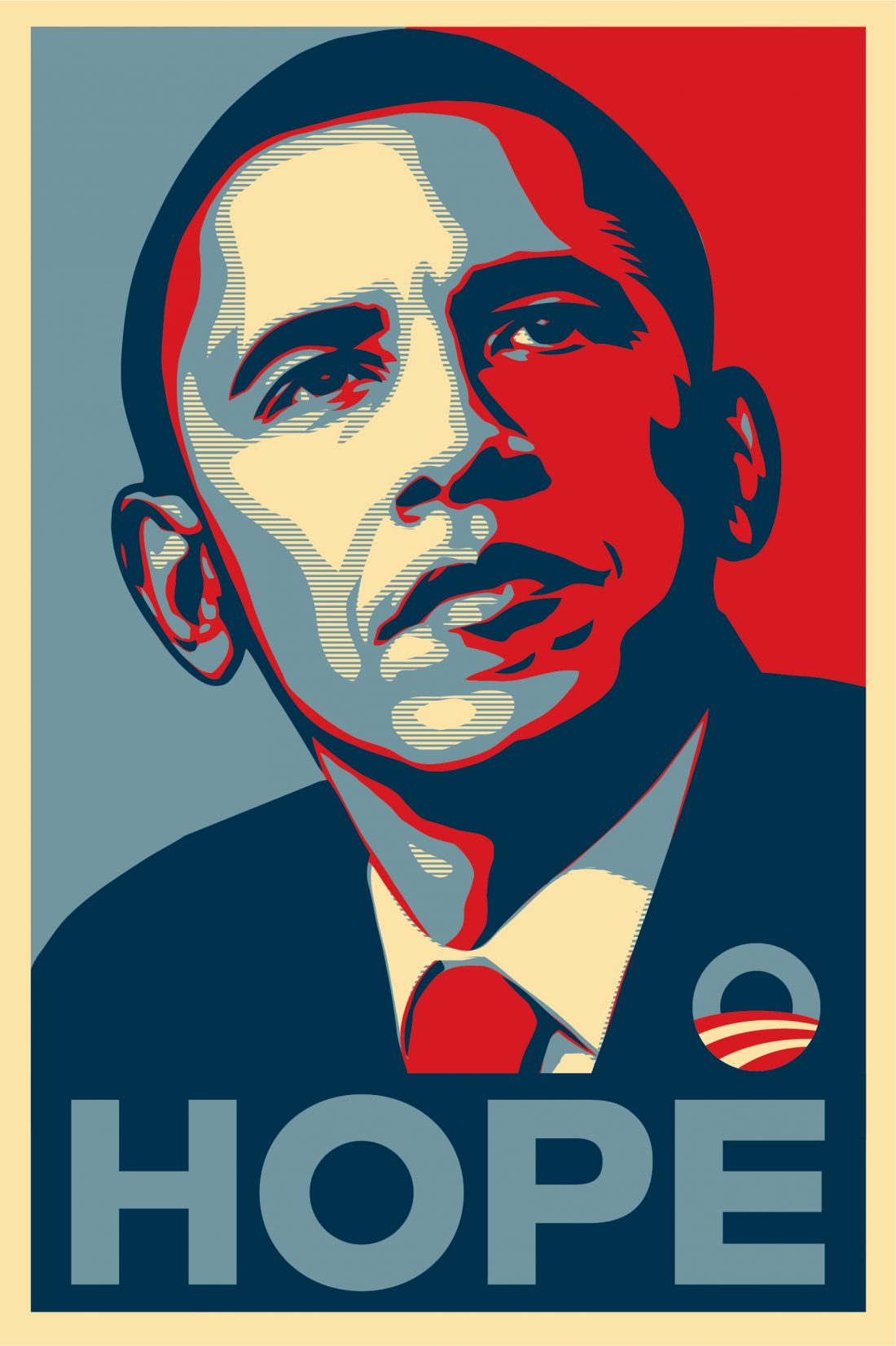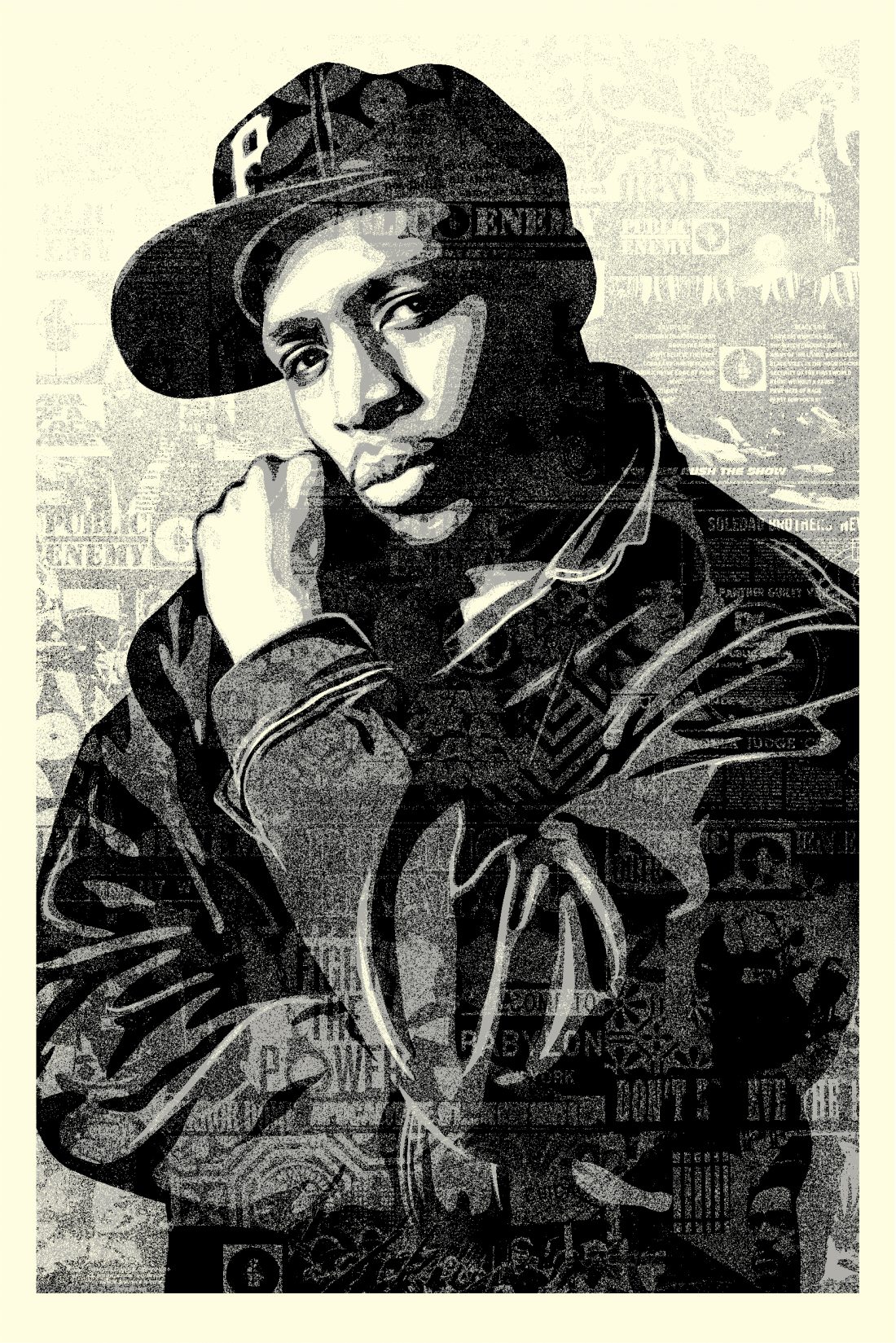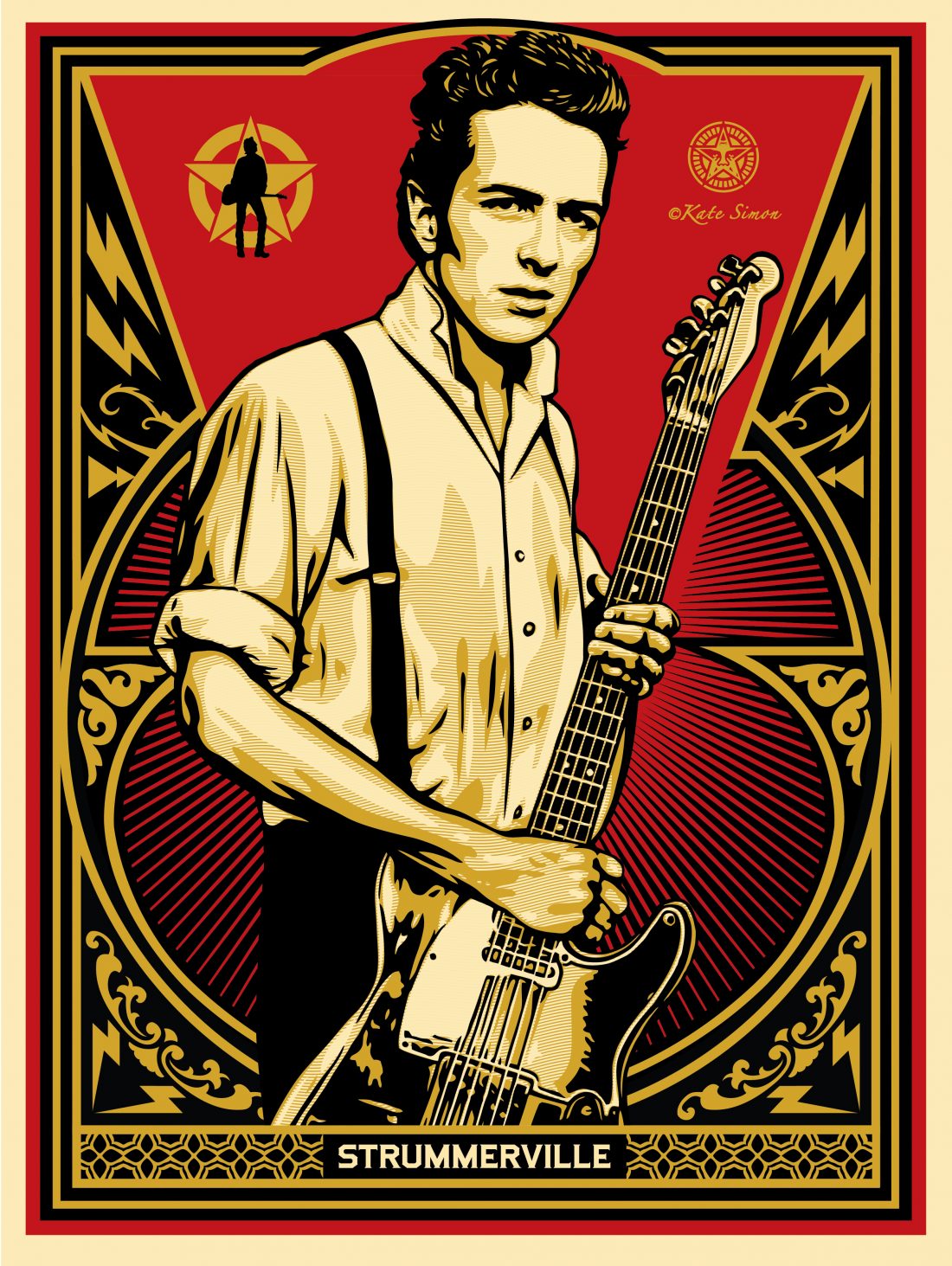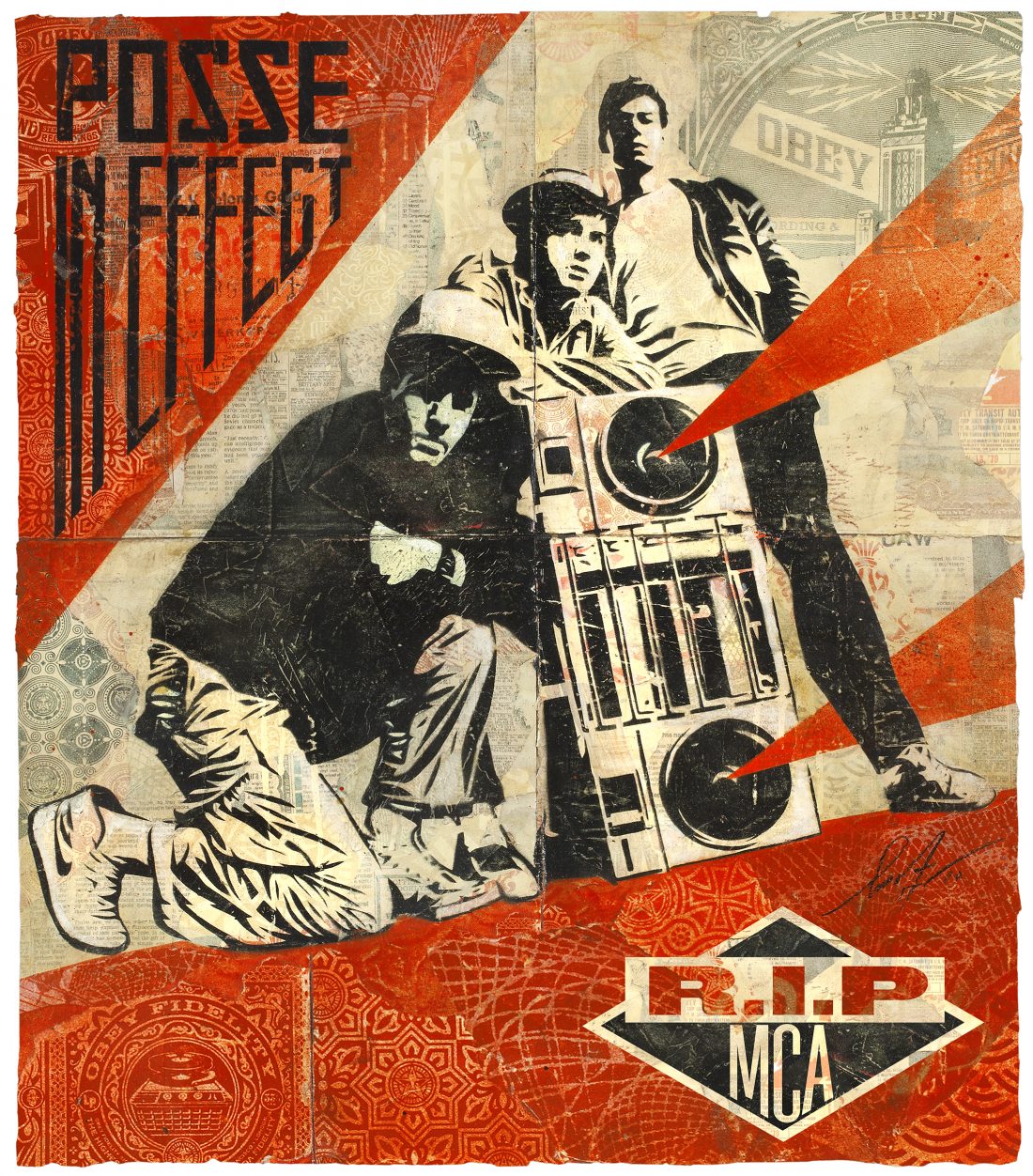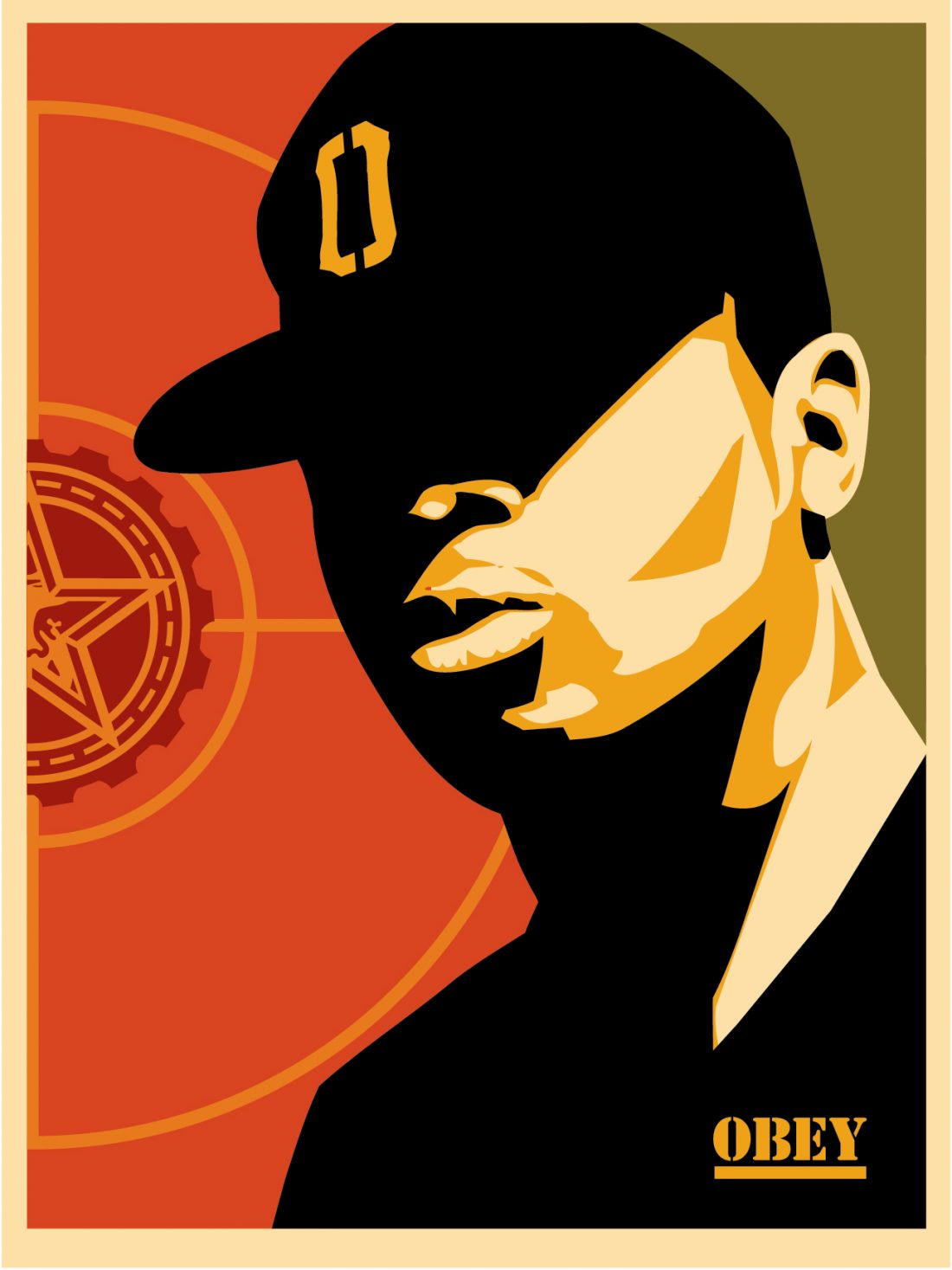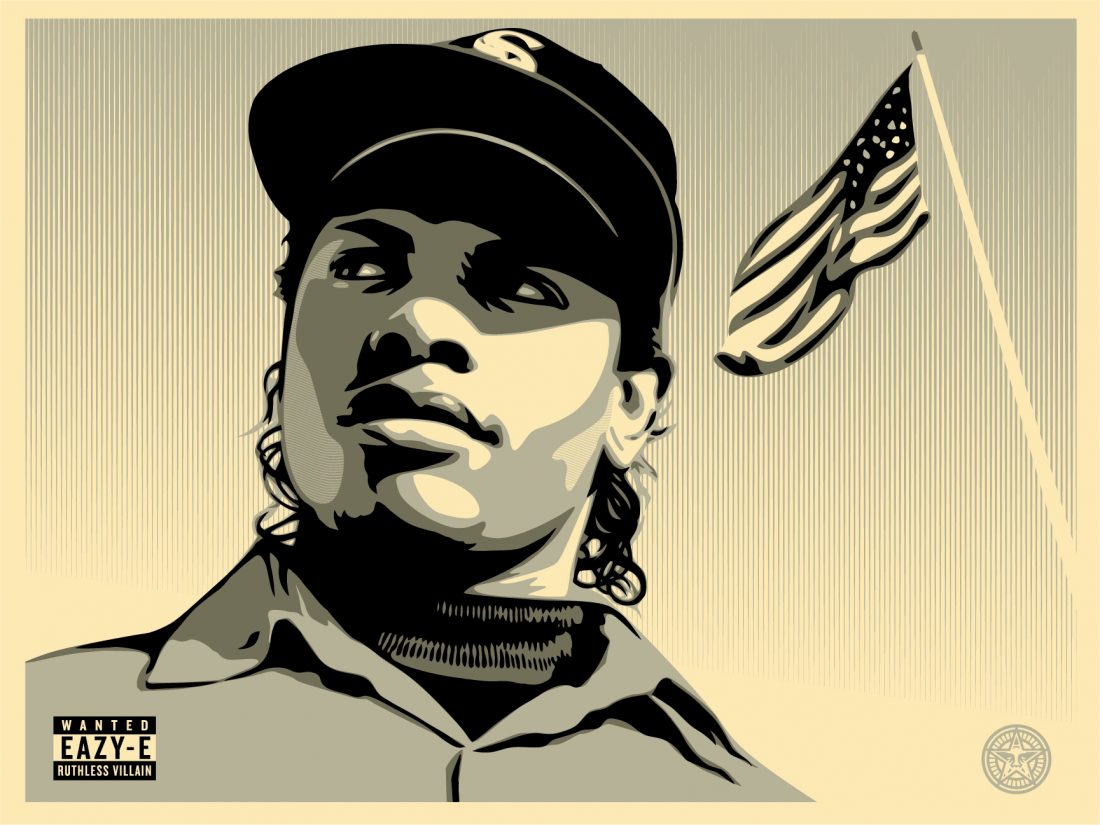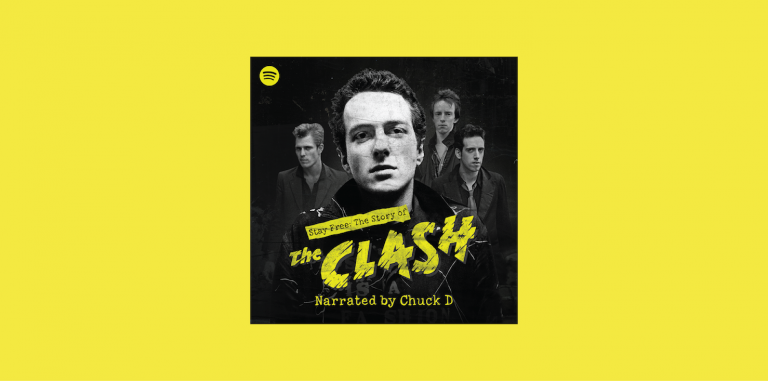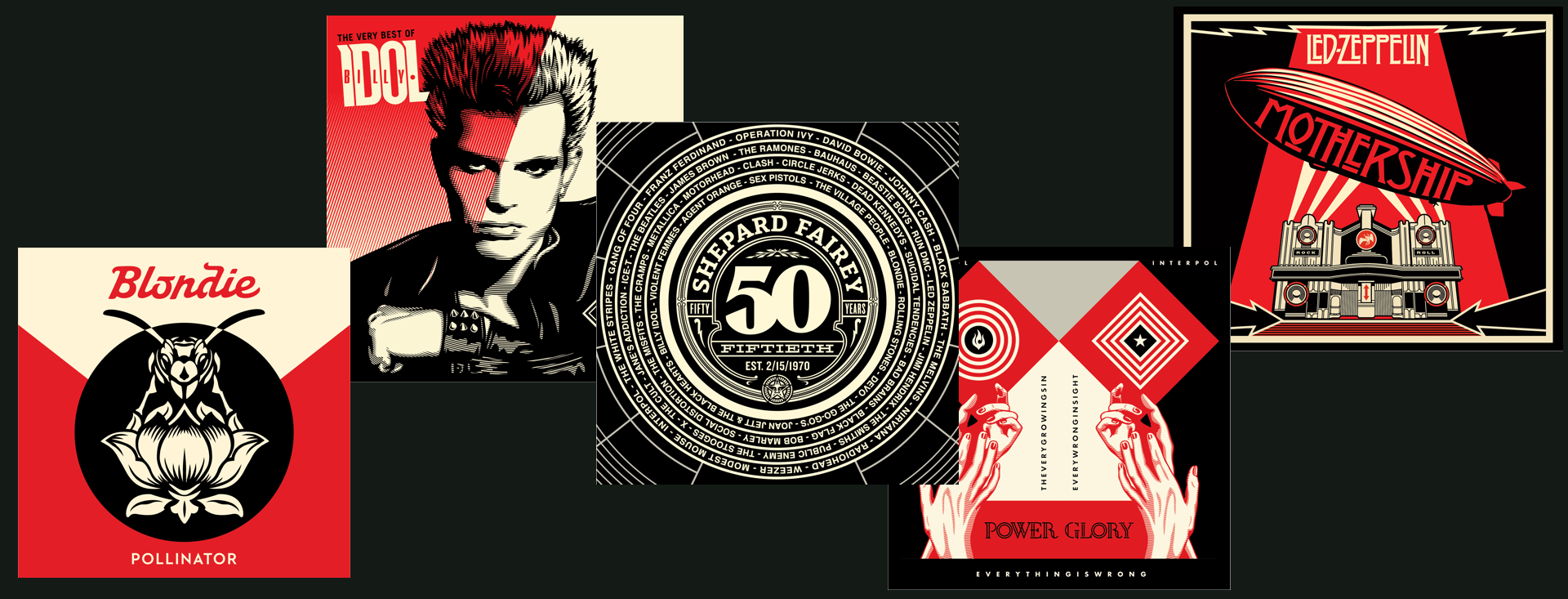
Street Artist Shepard Fairey Shares the Music That Has Shaped His 50 Years of Inspiration
Shepard Fairey can rattle off song lyrics like it’s his job. It’s not—he’s a visual artist who creates striking multicolored prints and posters that he’s been known to plaster on city walls—but he doesn’t downplay the impact music has had on his art, process, or mentality. “Musicians are great with putting across profound ideas in really digestible snippets, and that’s what I’m trying to do with my art too,” he explained to For the Record ahead of his 50th birthday.
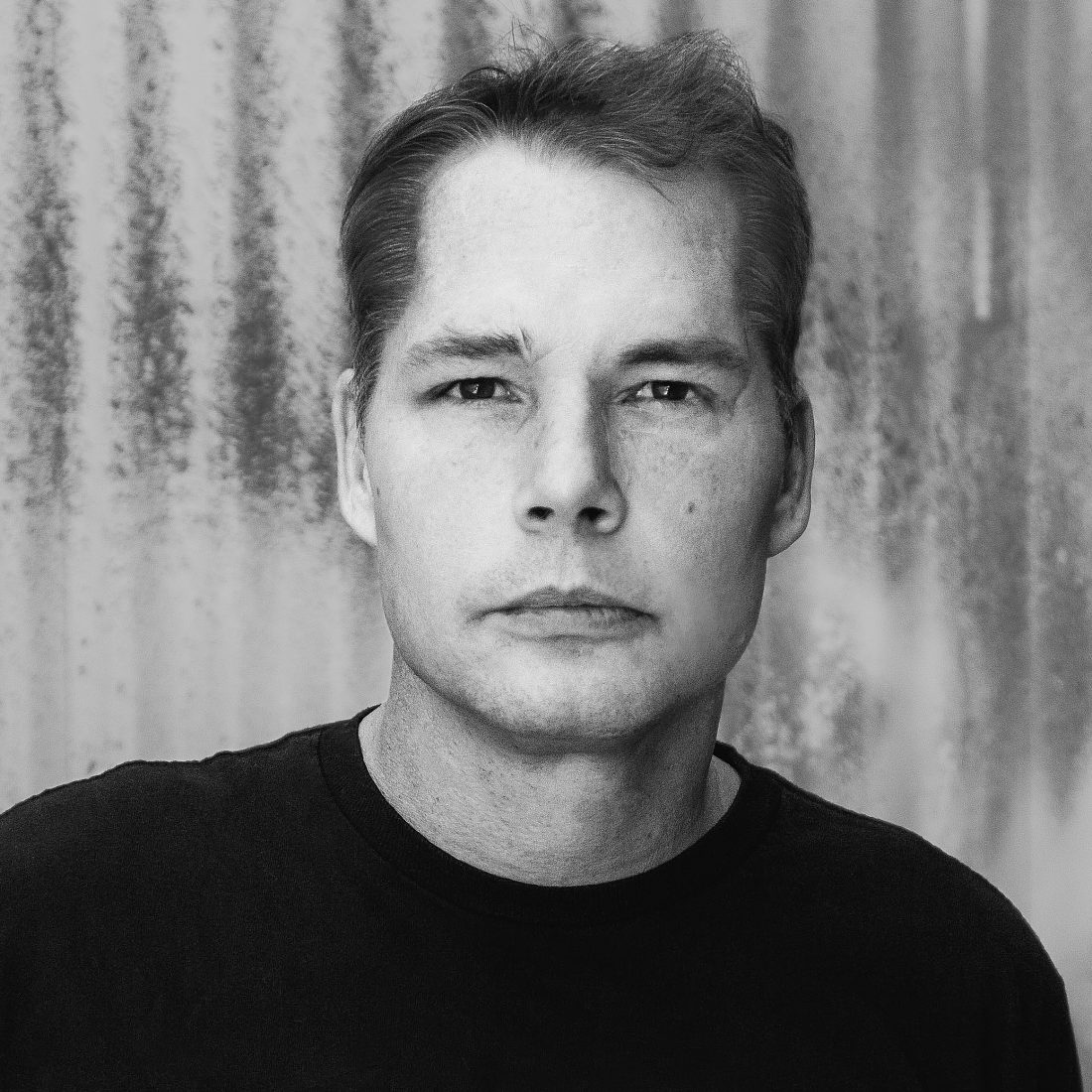
Born and raised in South Carolina, the graphic designer discovered skateboarding and punk rock in 1984. It plunged him into a pop culture world that he would ultimately have a hand in shaping. So to celebrate his milestone birthday, Fairey not only created his own “50 at 50” Spotify playlist, (read all about it here), but he also sat down with For the Record to explain the unique relationship between his art and music, starting from the early days.
The Sex Pistols and The Clash, in particular, impacted him as he grew up; both bands used their music to talk about social and political issues in a cool and constructive way. But what especially intrigued Fairey was how The Clash evolved musically over time, taking on rock, reggae, and even funk hip-hop with songs like “The Magnificent Seven.” Fairey explained that to him, the song “is pretty much a proletarian Marxist’s working class song set to a funk beat.”
Hip-hop, another genre that personally impacted Fairey, is behind his first publicly acclaimed piece, “Andre the Giant Has a Posse.” It’s a sticker campaign he created while a student at the Rhode Island School of Design (RISD). “I created the original Andre the Giant Has a Posse in ’89 when I was hanging out with a crew of skateboarders who started to say ‘that’s our posse,’ which was just ripped straight from hip-hop songs we liked, including stuff by Public Enemy, Beastie Boys, N.W.A., and Sir Mix-A-Lot. Ice-T had a song called ‘Power’ with an opening line about a ‘posse unstoppable,’ and I was listening to that record over and over and over again.”
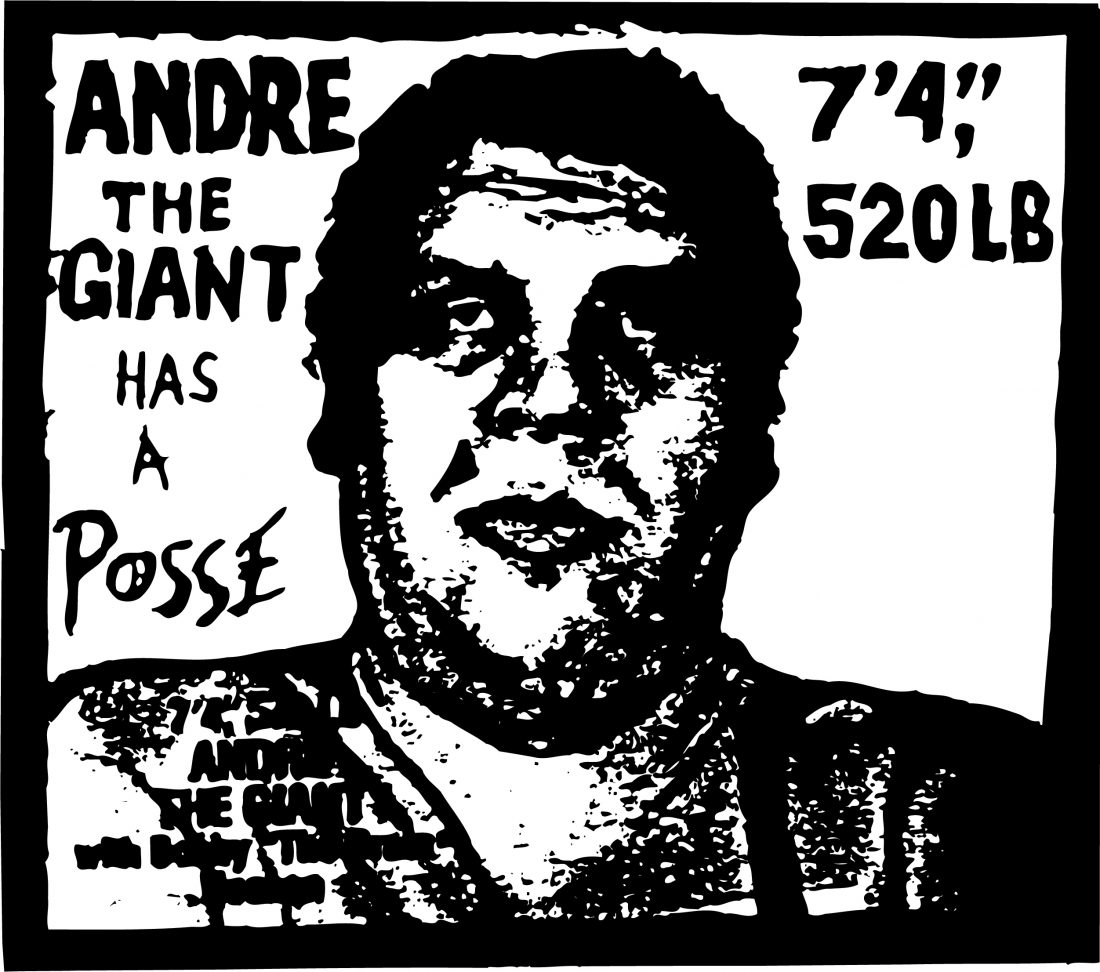
All art courtesy Shepard Fairey/ObeyGiant.com
After graduating, Fairey started disseminating his ideas and art on strategically placed posters, a move that was largely influenced by the sorts of promotions that American hard-core bands like Black Flag and the Dead Kennedys would create. As he gained prominence, Fairey also had a hand in creating album art for the likes of Led Zeppelin, The Smashing Pumpkins, Billy Idol, Interpol, and Blondie. Throughout it all, he was also DJing, using his love, interest, and knowledge of music to set the mood.
Always politically inclined, Fairey launched himself into the 2008 election by creating the now-infamous Obama “Hope” poster, which he says was inspired by hip-hop’s foundational music, including that of James Brown and Parliament. Fairey noted that he DJed the night of the election and, after Obama won, spun a remix of the MC Breed song “Ain’t No Future In Yo Frontin’,” looping the line “you leave it up to me, I’d paint the White House black.”
Nowadays, Fairey is turning his attention and art to another pressing topic: climate change. “To me it comes down to really simple concepts. There’s no us versus them, there’s just us and this planet. I’m pushing for the idea of just respecting each other and respecting that everyone needs to be able to have a good quality of life. Don’t be selfish.”
In explaining what he’s been working on most recently—his 50 at 50 playlist—Fairey noted that most of the songs are from the impactful ’80s. “That was just such a defining period of time for me as a person, as my ideas were taking shape.” He explained that the following five songs were particularly impactful:
’70s – “Heart of Glass” by Blondie
“I think the second song I ever remember really being moved by was ‘Heart of Glass’ by Blondie when I was nine years old. Though a lot of people considered it a disco song—including Blondie themselves—there’s a cool factor to it. Blondie was part of the New York CBGB scene, which was kind of a bridge into the subculture for me. So that’s really meaningful.”
’80s – “Whip It” by Devo
“Devo had ‘Whip It’ on the radio, but they also had a lot of stuff that never really got mainstream airplay but is really good, smart music. They came from art rock and punk but had enough of a quirky new-wave appeal to cross over a bit. And Devo is named after the concept of de-evolution—the idea that society, humans, are getting dumber. It’s just so subversive. So that’s informed my art a lot.”
’80’s – “For Whom the Bell Tolls” by Metallica
“Punks and metalheads were like the Sharks and the Jets, but all of a sudden Metallica came along and they were straddling both worlds. So Metallica was my gateway to Motörhead, Black Sabbath, Slayer, and a lot of other great metal music. It broadened my horizons.”
’90s – “Bring the Noise” by Public Enemy
“Public Enemy is my all-time favorite hip-hop group. To me, they made the albums that are the pinnacle of the entire genre with It Takes a Nation of Millions… and Fear of a Black Planet. ‘Bring the Noise’ is an anthem that people know, and it’s the opening to the It Takes a Nation of Millions… album with its political lyrics referencing the Black Panthers and Malcolm X. It’s a powerful universe to explore.”
’00s – “Obstacle 1” by Interpol
“From the 2000s, I’d say that Interpol is the band that I was most excited about when they first came out and who I still love. I included the ‘Obstacle 1’ from their album Turn On the Bright Lights. I’ve worked with them on several projects. They have a super clear idea of their vision musically, aesthetically, how they’re going to do their videos, their fashion. They’re really cool guys.”
Just as music taste differs from person to person, Fairey knows that his art doesn’t intrinsically speak to everyone—but that’s part of his intent. “Art and music are both amazing in that they provide joy and escape but can also be provocative. I’ve seen the things I’ve done, like the Obama “Hope” poster or the We the People series of posters for the Women’s March, become symbols that seem to help shape people’s attitudes.
“There’s so many different ways that music can move the needle—look at the music that went along with the civil rights movement, and how disco helped to bring gay rights into the mainstream—and I think it’s something that everyone who is a creator should always consider. As Chuck D of Public Enemy puts it, ‘Reach the bourgeois and rock the boulevard.’”
Stream the entire Shepard Fairey 50 at 50 playlist below.




